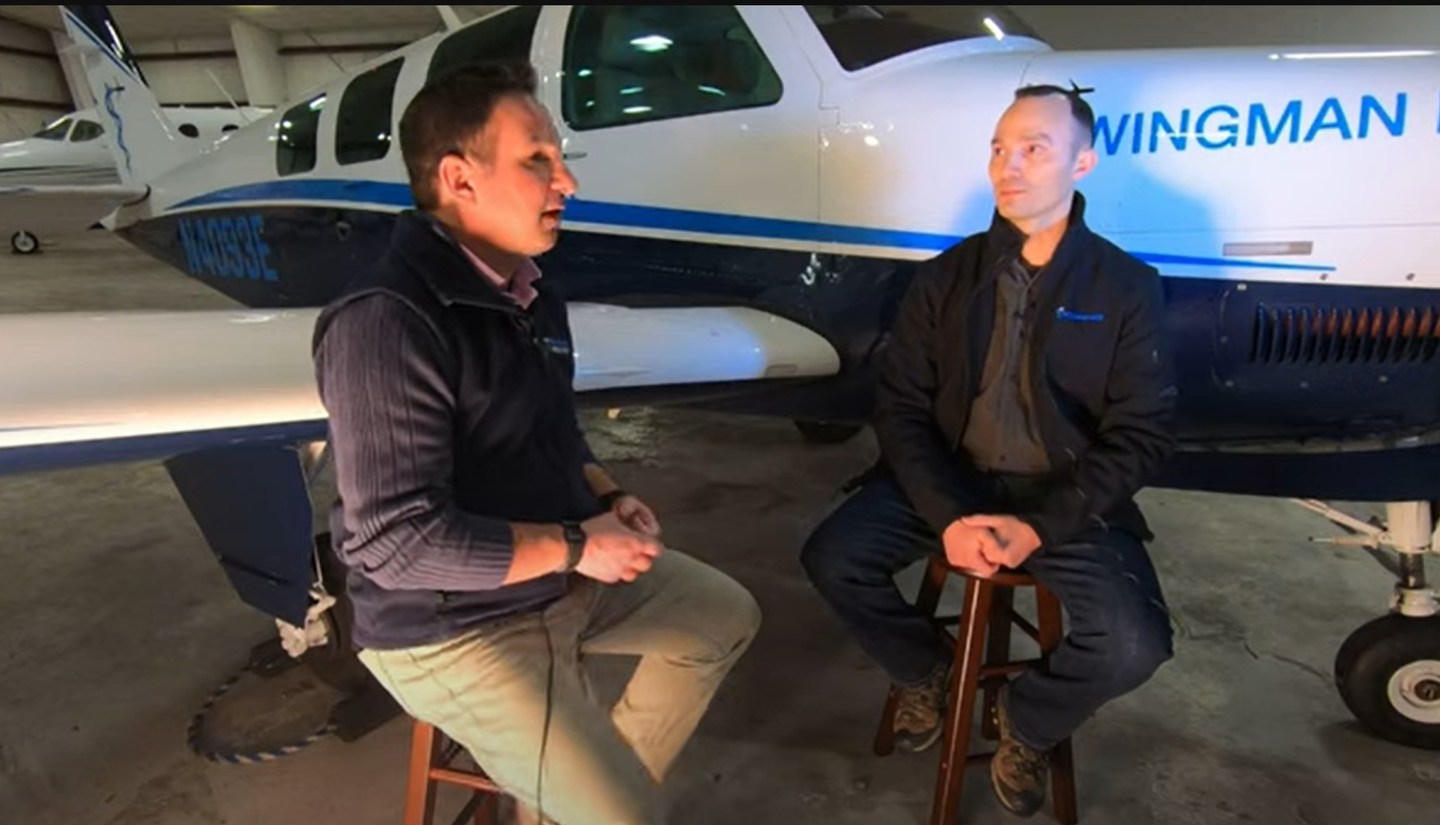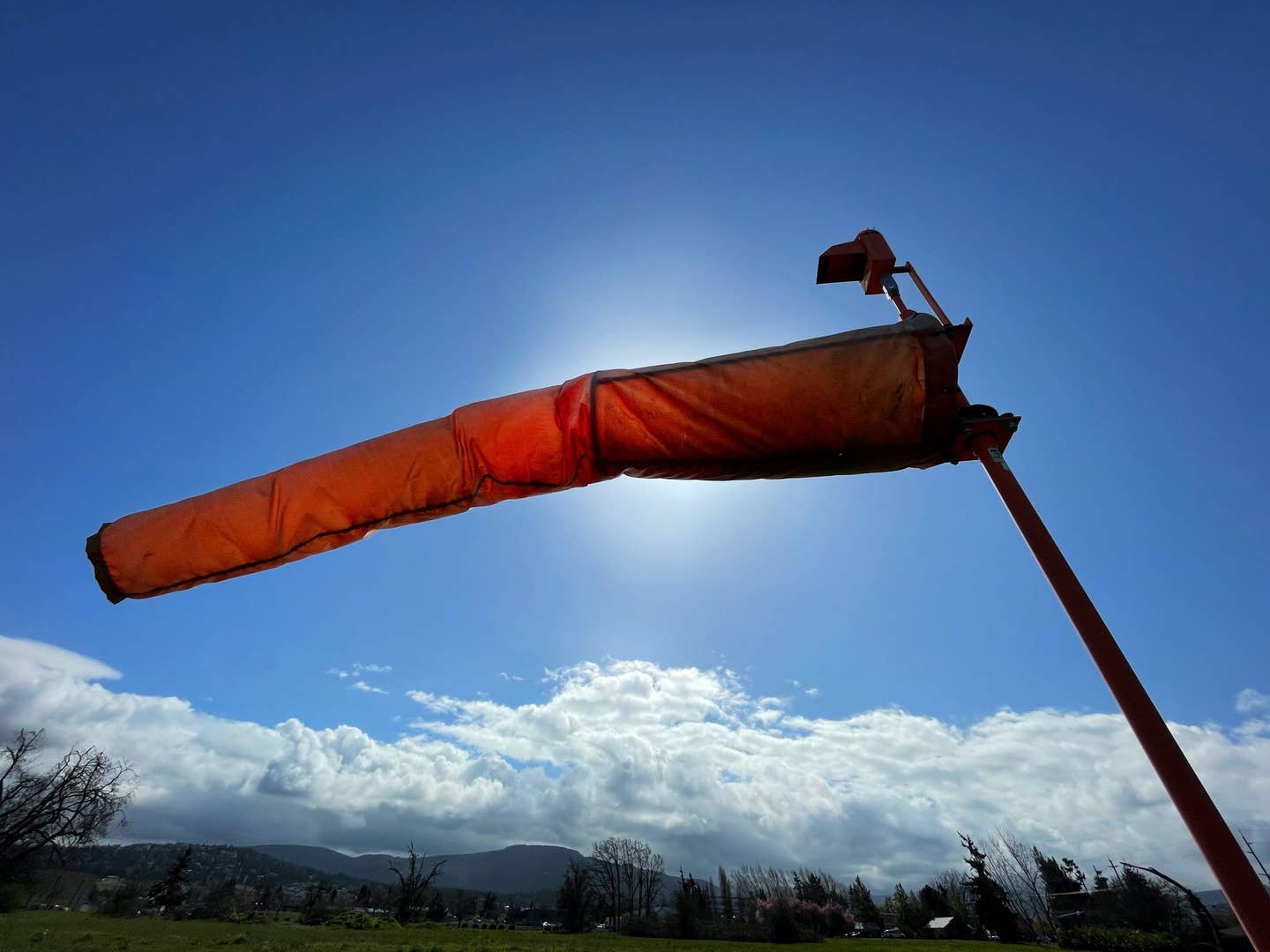A Really Short Final And Hard Lessons Learned
Working to avoid something bad sometimes lead to a different form of pain.
The plane hit hard, the dust rose, and, for a split second, I had no idea what the hell had just happened. Then, once the realization hit me, I got this sick feeling, a sinking spell in my gut that threatened to knock me out of active participation in my only job just then---being a pilot---and I felt like crying but didn't, thank goodness. As I battled my desire to run away from the hard reality I now faced, one thought reverberated, hollow, like an empty hangar with a single thought: "What had I just done?"
Let me set the stage. This happened back in the mid-1990s. I wasn't a new pilot, just one who didn't have much experience. I started flying and got my Private when I was a kid---thanks, Mom and Dad---but took a lot of time off for college. I enrolled in a large Southern California university and signed up for what was then a new major, something called "Computer Science." For four years, I battled bugs, wrote code and had fun outside of class hanging out with my fellow computer nerds. We were, I swear, way cooler than you might think (we told ourselves)!
Then, after college I got busy, like most kids, with finding a job, then working entry-level and paying bills and living life. Flying took a back seat. In those days, being an airline pilot was anything but a good career bet---we had family friends who had been furloughed a few times and who saw their airlines fold up shop, leaving them desperate for employment. There was no way I was signing up for that.
No, I saw flying as a hobby---an amazing one, admittedly--- but unfortunately an expensive one, too. You see, Mom and Dad were no longer paying for my flying, and I lived too far from home to fly with them more than a couple of times a year in the family plane I wasn't even rated to fly on my own (a nice Piper Aztec).
I started flying again in my mid-30s when I got a job as a computer network administrator at an aviation company in the Northeast United States that had a flying club and footed the lion's share of the bill. I was back at it, flying older airplanes, yes, but that was okay with me, so long as I was flying.
So while I had been a pilot for more than 15 years, I had been an active one for only a couple. When I dusted off my big, fat Commercial Pilot logbook, with its fancy gold-embossed printing, I pried open the pages to see that this slab of a book was woefully thin on entries. The majority of the pages had yet to be turned, laying flat against each other, still white and stiff, waiting for flights that had yet to happen, places I hadn't gone to and friends I hadn't yet flown with.
When co-workers and friends would ask how experienced I was, I'd lie just a little, telling them I had "a few hundred hours." But the truth was, I had just under 200 hours logged. I had just started on my commercial rating when I went off to college, and it, like my logbook, had been put on hold for the past decade-plus, though I hoped that was a temporary thing. And who knew how much I had forgotten.
So I was inexperienced and rusty, a condition that requires both time and effort to spruce up, and I was committed to doing just that. The thing about not having much experience, though, is that you don't feel the lack until it's put right in your face, like an accusation, like a doubter saying to you, "See! I told you that you didn't know what you were doing!"
That's exactly where I found myself that fateful day, still moving forward, still under control, still battling those bad, bad thoughts.
At that point in my flying career, I had built up a little time. I was flying not only in the company flying club but also with a different on the same field with bigger, faster models. My two favorites were a brown-and-orange Cessna 182 (remember those classic paint schemes?) that was going on its third engine but was kept in pretty decent shape, even if the paint was fading a little. I had gotten my instrument rating in that plane, though even with my fresh ticket in hand, I was anything but ready to start diving into actual IMC. Still, the rating gave me a little confidence, helped polish off some of the rust, and kept me safer against the possibility of loss of control were I to stumble into IMC while off on a VFR adventure.
It was in that same Skylane that I found myself that day wishing I was anywhere else.
It was a beautiful June day, a perfect day, and the plan was to fly to a well-known ski resort with a good buddy to go mountain biking on the ski trails. We had loaded the two bikes into the back of the 182 somehow, and, bright and early, departed from our home airport nestled in a crook of Long Island Sound and headed to Vermont, the Green Mountain State, for a day of fun.
The little mountain resort had a short runway, and I had been worried about it. As a pilot, you can't help but hear that tired old saw about the things you can't use being---fuel not in the tank, runway that's behind you and altitude above you.
It's a cliché, yes, but it's a cliché because it's true. Well, it's mostly true. Fear of being short of something can lead to overcompensation. While trying too hard is seldom fatal, it's not flattering, and it's seldom good for the operation as a whole. Fear of not having enough fuel can cause a nervous pilot to fly over gross, and fear of being too low can lead to flying in clouds you'd really rather not be in.
The fear of leaving that runway behind you!such was my issue.
Speaking of that runway, I, like many pilots with little experience, had almost no experience flying off of really short strips. Strike that: off of runways that weren't exceptionally long for Archers and Skyhawks and the like. The desert airport where I learned how to land a plane in California had a 6,000-foot strip and was home base for Lears and Citations. In comparison, my new home airport in the Northeast had a tiny 5,000-foot strip, only good enough for, well, okay, those same Learjets and Citations. It was overkill for a Skylane, but I was used to it to the point that it seemed like a minimum requirement.
So as I was planning for the trip, I was really worried that the tiny 3,000-plus-foot strip would prove a challenge, especially since the density altitude would increase the runway required at least a little. In response to what I perceived as a challenging strip to land on, I planned to make a short field landing. The last thing I wanted to do was land long and leave useful runway behind me. I got the charts out, calculated the required landing distance given all the variables, and saw that I had plenty of room to land. But did I really? Better safe than sorry, I thought.
Funny thing. The one thing that old saying doesn't mention as being useless is runway not yet under your landing gear. And that's exactly the spot I found myself in, lined up for a short-field landing for a field that, in reality, wasn't really that short. I didn't yet have a firm understanding of the concept of the power curve, that getting behind is a bad thing because you might not have enough power at your immediate disposal to get back in the groove, and that's what happened.
My short field approach that was intended to land me right at the beginning of the paved surface instead deposited us on the dirt a good 10 feet before it, and deposited us hard. The aforementioned dust rose to greet the prodigious bang of our dramatic reunion with terra really firma, and in that split second I realized we had landed short. The immediate question then was, "What if there's a big lip between the beginning of the runway and the part of the earth that's not yet the runway?" I knew if there was, we'd be screwed. We wouldn't die, or even get hurt. We were already really, really slow, way too slow, in fact, but it could wreck the airplane and tarnish my ticket for good. Not to mention my reputation around my company, which prided itself on safety.
Luck came to the rescue. I know that's the last thing you should ever depend on to bail you out of a bad situation you just put yourself in, but I was eager to take any kind of help I could get. There was no discernible lip, the Skylane made the transition from dirt to pavement not smoothly but without a cracking sound, and we were stopped, or very nearly stopped, with just about all of the remaining runway distance ahead of us. I had to apply power to taxi all the way up to the midfield turnoff, and I felt as though every eye in the place, on the ramp, in the traffic pattern above us, was on me and my failure.
The plane was taxiing just fine. My passenger, my friend and co-worker, was a little shocked at the near-crash landing, but I played it off as just a touchdown that was a little too hard on the touch part, and he was good with that and never mentioned it again.
I parked the plane at the FBO and walked around, peering into the engine compartment, examining the gear and generally looking for any kind of damage I might have done to it. There was none visible. And later, back home, a friendly mechanic confirmed all was fine. I had dodged a bullet. Several of them. A barrage of bullets, in fact, and I felt appropriately stupid. But I'd figured out it's safer to aim not for the end but for the number. Margin is our friend.
And I learned to understand and better appreciate the power curve and how it's a space that has something precious for us. But in making that offer, the back side of the power curve is a friend that's unforgiving of inexperience and ineptitude, both qualities of which I had in abundance that day and both of which I aimed these past 25 years and nearly 4,000 hours later to overcome while doing my best to be aware of the risks while never, ever overcompensating in seeking to give them too wide a berth lest I run into a whole different foe on the other side of safety.
Have you had a close call or a cool aviation experience that left a lasting impression? Share your story in our Lessons Learned About Flying Essay Contest today.

Subscribe to Our Newsletter
Get the latest Plane & Pilot Magazine stories delivered directly to your inbox






